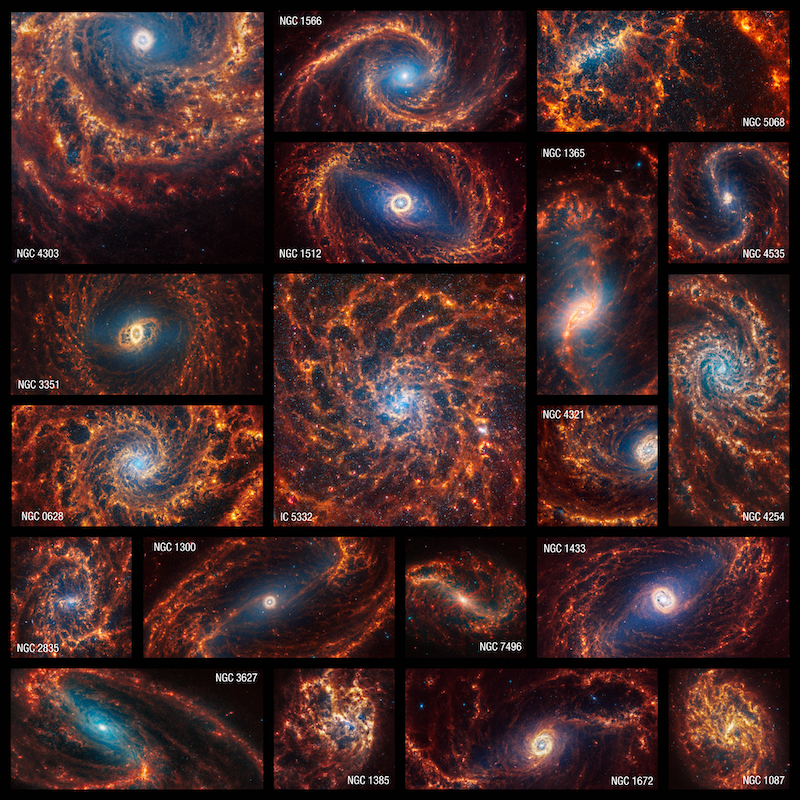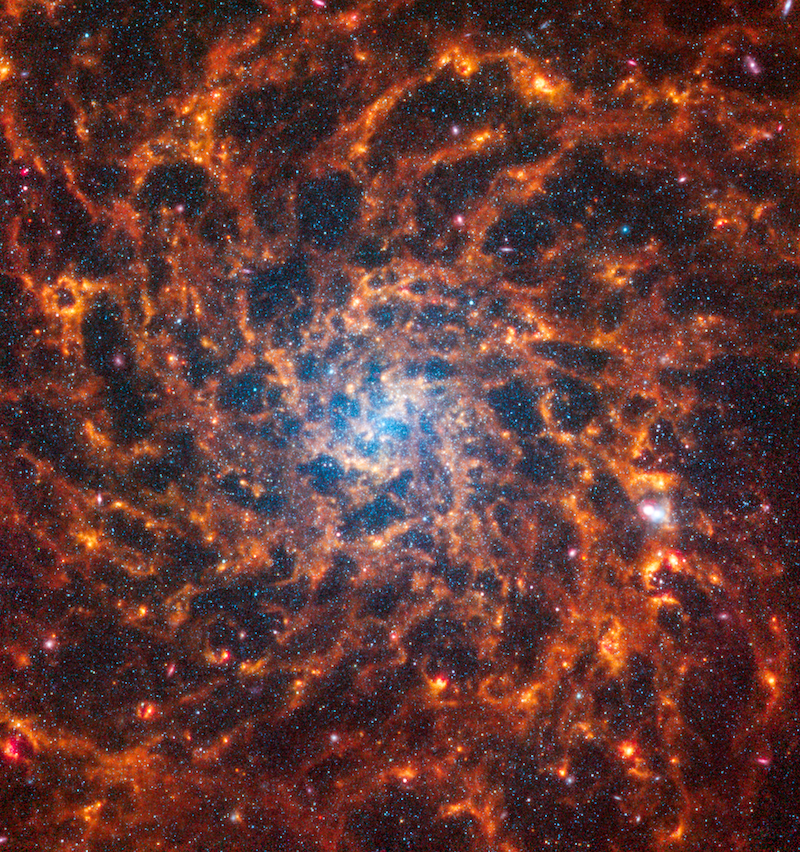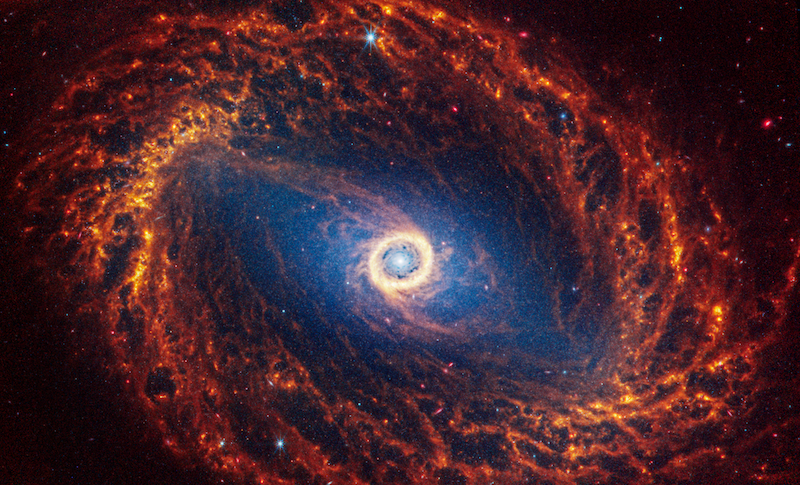
Webb’s incredible new views of 19 spiral galaxies
We’ve all been mesmerized by the images that NASA’s James Webb Space Telescope has been sending back to Earth. Webb captures its views of the universe in both near-infrared and mid-infrared light, in unprecedented detail. NASA just released its latest batch of images on January 29, 2024, and they are spectacular. The new photos show 19 spiral galaxies, all of which appear face-on toward Earth. They are the highest-resolution images of these galaxies ever obtained so far. You can see the well-defined arms, stars, gas and dust in exquisite detail. See a selection of them below and the full set of images on the Webb Space Telescope website.
You can also see versions of the images that combine the new Webb views with the previous Hubble views of the same galaxies. This is one great example, showing the differences in how the two telescopes see the same objects.
PHANGS
These images are part of the Physics at High Angular resolution in Nearby GalaxieS (PHANGS) program. Overall, more than 150 astronomers around the world are involved in the program. In addition, PHANGS also uses data from NASA’s Hubble Space Telescope, the Very Large Telescope’s Multi-Unit Spectroscopic Explorer and the Atacama Large Millimeter/submillimeter Array (ALMA) in Chile. And now, it includes images and other data from Webb, too.
The scientists are, needless to say, impressed. Janice Lee, a project scientist at the Space Telescope Science Institute in Baltimore, Maryland, described the images:
Webb’s new images are extraordinary. They’re mind-blowing even for researchers who have studied these same galaxies for decades. Bubbles and filaments are resolved down to the smallest scales ever observed, and tell a story about the star formation cycle.
Thomas Williams at the University of Oxford in the U.K. added:
I feel like our team lives in a constant state of being overwhelmed – in a positive way – by the amount of detail in these images.


Stars, dust and spherical shells
To be sure, the images depict the things we expect to see in galaxies: millions of stars and huge clouds of dust and gas. As in our own Milky Way galaxy, some stars are spread throughout the spiral arms, while others are in tight clusters. In these near-infrared and mid-infrared images of the 19 spiral galaxies, they look like tiny blue specks. Those are populations of older stars, close to the galaxies’ cores. In addition, the images show younger and more massive stars that are still forming. Those, on the other hand, look more reddish. Erik Rosolowsky at the University of Alberta in Edmonton, Canada, said:
These are where we can find the newest, most massive stars in the galaxies.
Indeed, those features alone are a marvel to see. But Webb spied something else, too: huge spherical “shells” in the dust and gas in the galaxies. What are they? The researchers said they may have been created by exploding stars, as Adam Leroy at Ohio State University in Columbus, Ohio, explained:
These holes may have been created by one or more stars that exploded, carving out giant holes in the interstellar material.
And as Rosolowsky also noted:
These structures tend to follow the same pattern in certain parts of the galaxies. We think of these like waves, and their spacing tells us a lot about how a galaxy distributes its gas and dust.

Do the 19 spiral galaxies contain supermassive black holes?
Astronomers now know that most galaxies have supermassive black holes in their centers. This includes the Milky Way. The new Webb images help to confirm this in galaxy cores that feature pink and red diffraction spikes. Eva Schinnerer at the Max Planck Institute for Astronomy in Heidelberg, Germany, said:
That’s a clear sign that there may be an active supermassive black hole. Or, the star clusters toward the center are so bright that they have saturated that area of the image.
Holistic view of star life cycles
Likewise, the number of stars that Webb can resolve in these galaxies is also unprecedented. This means that astronomers can now better understand the life cycles of stars outside our own Milky Way. As Leroy noted:
Stars can live for billions or trillions of years. By precisely cataloging all types of stars, we can build a more reliable, holistic view of their life cycles.
The PHANGS program studies more than just galaxies. It also released the largest catalog to date of star clusters, containing about 100,000 known star clusters. Overall, PHANGS now contains too much data for its team to deal with alone. Rosolowsky said:
The amount of analysis that can be done with these images is vastly larger than anything our team could possibly handle. We’re excited to support the community so all researchers can contribute.
See all 19 new galaxy images from Webb
Bottom line: NASA’s Webb Space Telescope has taken stunning new images of 19 spiral galaxies. Besides being breathtaking to look at, they are rich in science data.
Read more: New stamps feature Webb images of the cosmos!
Read more: Wow! Whirlpool galaxy in stunning new Webb images











